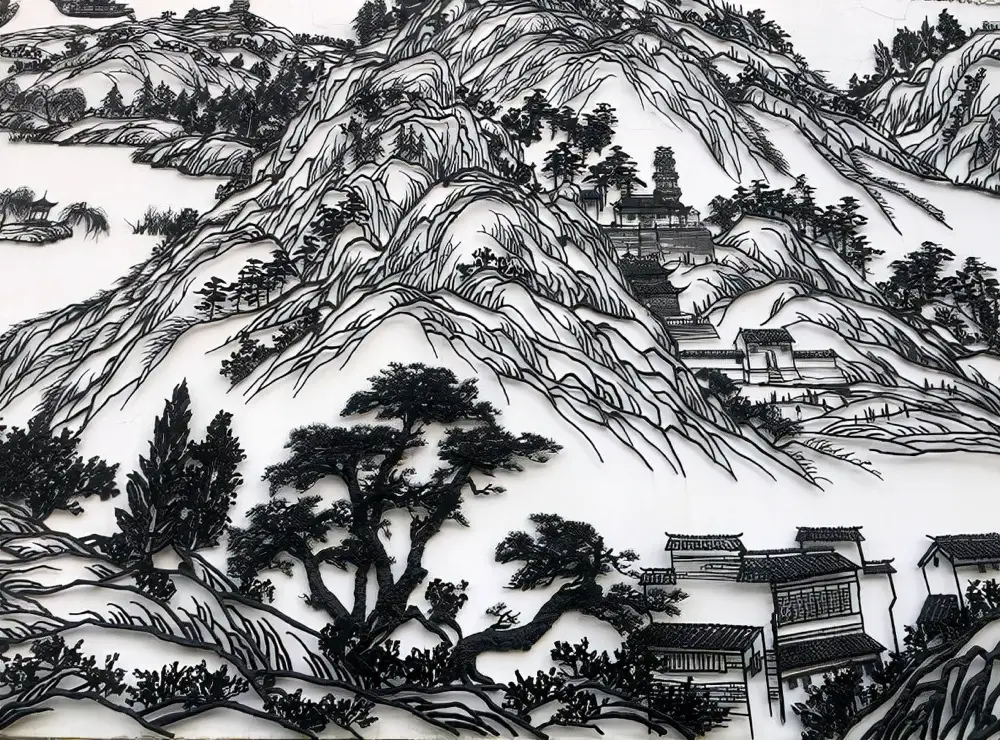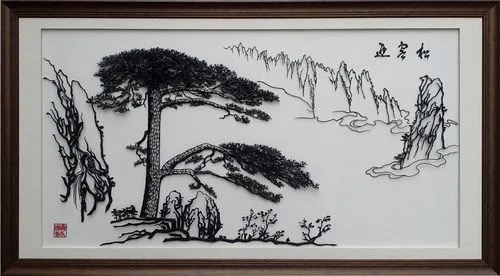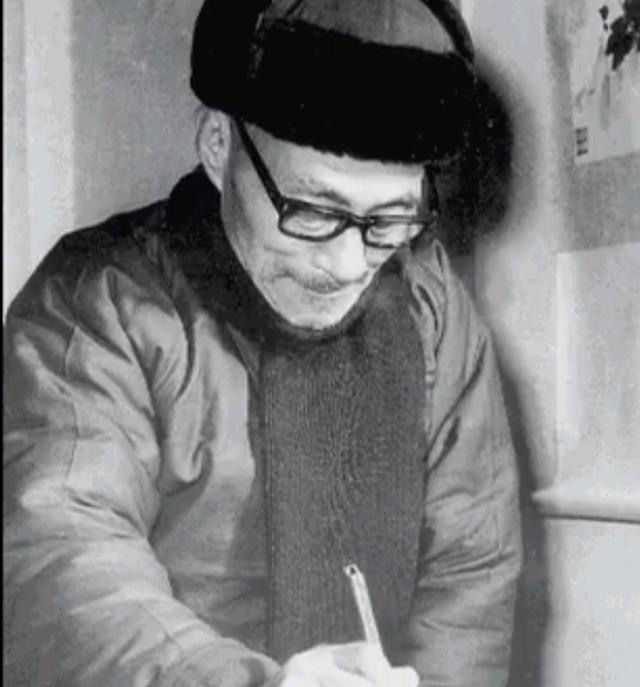Iron painting, also known as Tiehua, is a traditional Chinese craft that dates back to the Tang Dynasty. Iron painting uses hammers and anvils as the main tools to forge and weld iron plates or wires into various patterns and shapes. After undergoing processes such as polishing and painting, it becomes a form of artistic expression.
The production of iron painting involves multiple steps, including design, cutting, forging, welding, polishing, and painting. Among these, forging and welding are the fundamental techniques in iron painting production, requiring mastery of appropriate heat and skill to ensure the quality and artistic value of the iron painting.
Iron painting covers a wide range of themes and diverse forms, depicting landscapes, flowers and birds, figures, and various other subjects. Its style is unique, possessing the charm of traditional Chinese painting combined with the three-dimensional quality of sculpture, contributing to its high artistic and collectible value.
The origin of iron painting can be traced back to the Tang Dynasty when it began to appear and gradually develop. In the Qing Dynasty, the craftsmanship of iron painting saw further improvement and development, leading to the emergence of renowned schools such as Huizhou iron painting and Wuhu iron painting.
Huizhou iron painting primarily uses hammers and anvils to forge and weld iron plates or wires into various patterns and shapes, which are then processed through polishing and painting. Its characteristics include main themes of landscapes, flowers and birds, and figures. The compositions are concise and lively, with smooth and natural lines, creating vivid and expressive images.
In addition to Huizhou and Wuhu iron painting, there are many other iron painting schools across China, such as Leshan iron painting in Sichuan and Fuzhou iron painting in Fujian. These schools have their own unique characteristics and styles, but all primarily use hammers and anvils to forge and weld iron into various patterns, showcasing the unique charm of Chinese traditional culture and the exceptional craftsmanship of artisans.
What is Iron Painting
Iron painting, a unique form of craft art, is created from iron-cast lines that undergo processes like welding and polishing to produce artistic pieces with the charm of traditional Chinese painting and the three-dimensional quality of Western painting. Its origin can be traced back to the Ming and Qing dynasties in China, and the specific inventor is unknown. However, the invention of iron painting is associated with ironworkers and painters in the Wuhu region, with one of the most famous being Tang Peng from the early Qing Dynasty.

Tang Peng’s iron painting works primarily feature themes of landscapes, flowers, and figures, crafted from iron sheets and wires through forging, welding, and polishing processes. He incorporated the ink and wash techniques, composition, and layout of traditional Chinese painting, portraying simple yet vigorous scenes with concise lines. Simultaneously, he drew inspiration from the strengths of paper-cutting, woodcutting, and brick carving, merging the brushstrokes and layout of traditional Chinese painting to create artwork with distinct light and shadow contrasts and a strong sense of three-dimensionality.
Iron painting encompasses various categories, including figures, wood and stone, landscapes, flowers and birds, and more, each showcasing the unique artistic charm of iron painting. To this day, the Great Hall of the People displays a large iron painting titled “Welcoming Pine,” presenting the outstanding craftsmanship and distinctive style of Chinese iron painting to the world.
Iron painting integrates various artistic techniques such as folk paper cutting, carving, and inlaying, adopting the brushstrokes of Chinese painting with black-and-white contrasts, combining reality and virtuality to present a unique sense of artistic beauty. It stands not only as a gem in the treasury of Chinese arts and crafts but also as an important representative of traditional Chinese culture and art.
Wuhu Iron Painting
Wuhu Iron Painting, originally known as Iron Flower, is a renowned traditional Chinese craft in Wuhu City, Anhui Province, and is a local specialty of the region. The founder of the iron painting art is Tang Peng, a blacksmith during the Kangxi period of the Qing Dynasty. Wuhu Iron Painting is acclaimed globally for its long history, unique style, exquisite craftsmanship, and exceptional skill. It is believed to have been created by Tang Tianchi, an ironworker from Wuhu, during the late Ming and early Qing periods, gradually spreading to Beijing, Shandong, and other regions.
Wuhu Iron Painting encompasses a variety of themes, including figures, landscapes, flowers, and birds, with both three-dimensional and semi-three-dimensional forms. The art includes various formats such as vertical scrolls, middle halls, horizontal banners (usually framed), and iron painting lamps that consist of multiple panels. The craft of iron painting combines ancient welding techniques from gold and silver filigree with influences from paper-cutting, woodcutting, and brick carving. It integrates the brushstrokes and composition of traditional Chinese painting, resulting in artwork with distinct light and shadow contrasts and a strong three-dimensional sense, standing out in the realm of traditional crafts.
History of Iron Painting
Wuhu, situated along the Yangtze River, has a rich history and convenient transportation. It was a center for dyeing and printing during the Ming and Qing periods and one of China’s four major rice markets. The well-developed iron industry and advanced forging techniques provided a natural foundation for the creation of Wuhu Iron Painting.

Using the hammer as a brush, iron as ink, anvil as paper, and forging iron as painting, Wuhu Iron Painting is a masterpiece of craftsmanship, capturing natural charm and artistic expression. With a history spanning over 340 years, it originated in the Kangxi period of the Qing Dynasty, evolving through mutual refinement between Wuhu ironworker Tang Tianchi and Wuhu painter Xiao Chimu. The craft has produced masterpieces like the large iron painting “Welcoming Pine” displayed in the Great Hall of the People in Beijing and the giant iron painting depicting Mao Zedong’s poem “The Long March” in the Mausoleum of Mao Zedong.
Various Formats of Iron Painting
Small Scrolls:
Featuring subjects such as pine, plum, orchid, bamboo, chrysanthemum, and eagles, these iron paintings are framed and hung on pink walls, exuding an elegant and eye-catching appearance.
Iron Painting Lamps:
Comprising 4 to 6 iron paintings, these lamps are lined with paper or plain silk, with silver candles burning inside, creating dazzling and captivating effects.
Screens:
Often portraying landscapes, these screens are simple, elegant, and magnificent, showcasing the grandeur of mountain and water scenes.
Who invented iron painting
The originator of iron painting is Tang Tianchi, also known as Tang Peng. He was originally from Huizhou, Anhui Province, and later moved to Mingjue Township in Lishui County, Jiangsu Province. During his youth, he settled in Wuhu, a region known for its flourishing iron industry. Tang Tianchi learned the craft of ironworking, and during the Kangxi period of the Qing Dynasty, he leased a storefront from Huang Yue, an imperial scholar in the Qianlong era. Tang Tianchi established his own ironworking workshop. At that time, Wuhu was a major transportation hub and distribution center, attracting numerous traders and visitors. Tang Tianchi started creating colorful iron flowers and iron flower lamps for pilgrims heading to Jiuhua Mountain, one of China’s four major Buddhist mountains. Eventually, he combined the content of iron flowers and iron flower lamps, creating iron paintings with artistic styles featuring landscapes, bamboo and rocks, lotus flowers, willow trees, locusts, and cicadas.
Wuhu Iron Painting, with its unique artistic style, has become one of China’s renowned craft products, and it boasts a long history. It originated during the Kangxi period of the Qing Dynasty, founded by Tang Tianchi, and is often referred to as “Wuhu Iron Painting.” The artists use hammers instead of brushes, forging iron into paintings, making it a unique and extraordinary art form.
Iron Painting Artist
储炎庆 (Chu Yanqing), born in 1902 in Zongyang Town, Tongcheng County, Anhui Province, China, was part of a family involved in the iron industry. Orphaned at a young age, Chu Yanqing faced hardships and ended up begging on the streets with his younger sister. Through the introduction of a neighbor named Wang Xingfa, Chu became an apprentice at Wang Yonghe’s iron workshop. After completing his three-year apprenticeship in 1917, Chu moved to Anqing to work for a blacksmith named Yang. Later, he worked at the Yang Tongxing iron workshop in Wuhu. Despite facing challenges, Chu Yanqing became aware of the story of Tang Tianchi and the creation of iron painting, sparking his interest in learning this art form. His daughter, 储金霞 (Chu Jinxia), has inherited the skills of iron painting and established “Chu’s Iron Painting” as her brand, contributing to the continued development of iron painting.

Wuhu Iron Painting has witnessed various innovations over time, and artists have introduced creations such as porcelain plate iron paintings and silver tray iron paintings. The development of iron painting has added a unique flower to China’s cultural treasury, representing a precious heritage in the realm of art.